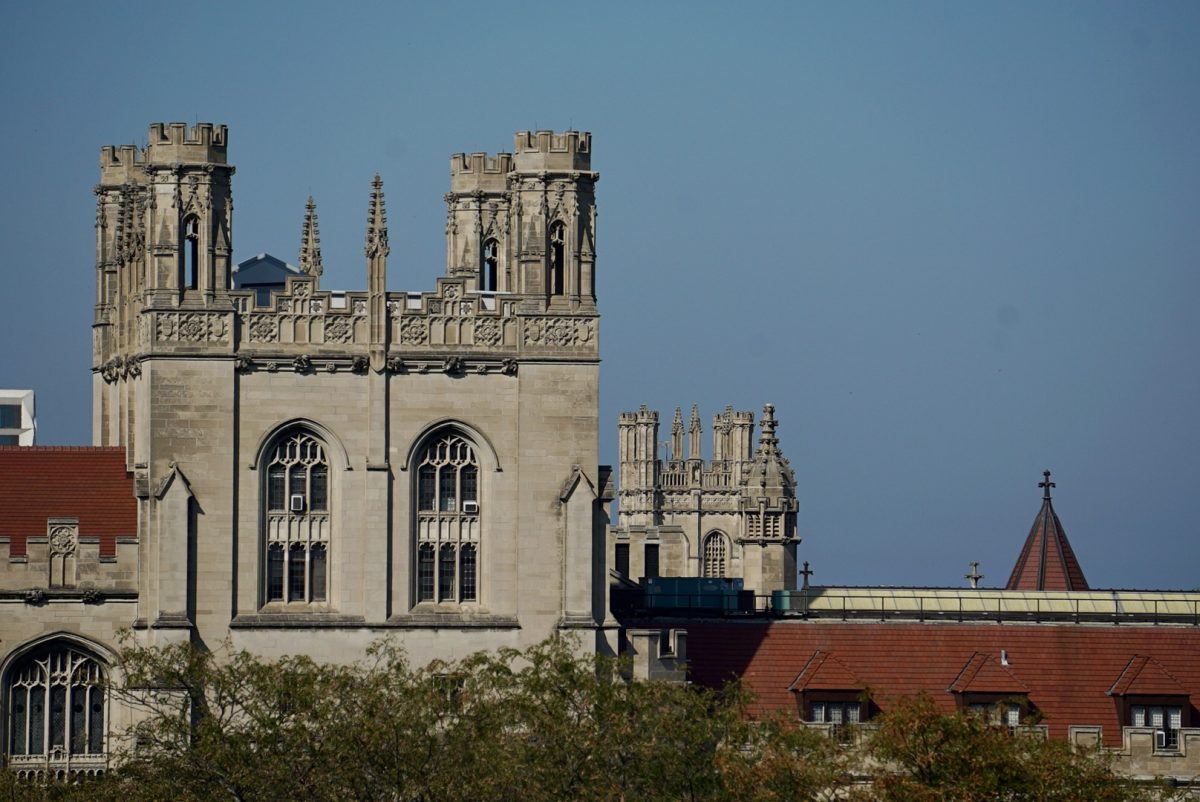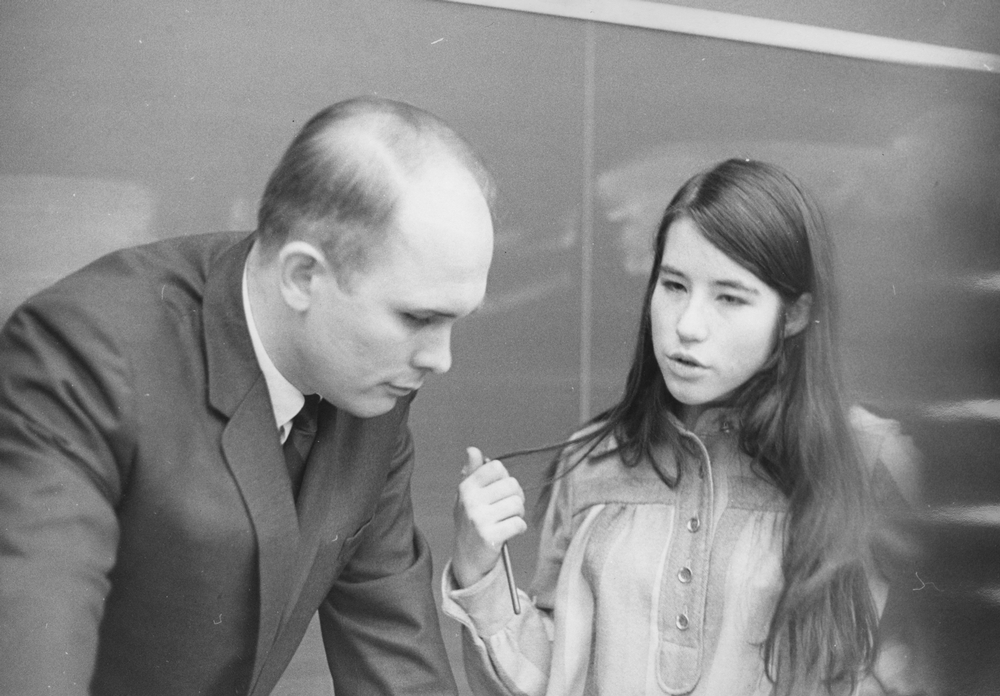The Hyde Park Historical Society (HPHS) conducted a tour through time Sunday afternoon in one of Chicago’s most geologically famous neighborhoods. Raymond Wiggers, a Professor in the Departments of Biology and Environmental Sciences at Lake Forest College, escorted about thirty fellow science and architecture enthusiasts through the area around the University, revealing interesting geological tidbits at every turn.
The program started with a 45-minute crash-course lecture on Chicago-area geology, followed by a two and a half hour walk through Hyde Park from the Metra tracks to the Point and down to Jackson Park.
Wiggers incorporated both classical and architectural geology into the tour. He tackled topics ranging from tricks of modern architecture to rocks older than the earliest life forms. “It turns out geology is even in the buildings and bridges. Geology isn’t just about rocks, it’s about processes and cycles in the earth’s history all different things you can see on the surface,” Wiggers said.
The journey began with an explanation of the flaking concrete columns under the 55th Street Metra tracks. Metal rebar, which reinforces the concrete from the inside, actually rusts over time and causes chemical weathering. This results in chunks of concrete periodically falling off the columns.
Wiggers continued with a history lesson. The quartzite blocks lining the sidewalks next to several buildings in Hyde Park are the same type of stones used for centuries to pave cobblestone streets. Quartzite is one of the hardest stones on earth and was ideal to resist grooving from steel-rimmed wagon wheels.
The trek also included a lesson in urban ecology. Indiana limestone, of which numerous buildings in he neighborhood are made, is remarkably resistant to aging. However, the great amount of emissions generated in Chicago causes even limestone structures to appear tarnished and sooty.
Wiggers ended the tour on a different note, pointing out a 3.6 billion-year-old stone situated near the crescent bridge in the Japanese Garden south of the Museum of Science and Industry.
Throughout the afternoon, however, Wiggers provided the group with lessons about how a geologist looks at the area. “What I see as a geologist is basically a three-dimensional construct. Geologists have a tendency to look thousands of feet underground,” he said. “The rock underneath can tell us a lot about what ancient Hyde Park was like.”
Wiggers also delved into a geologist’s methods: Not sure if a wall is made of limestone or the more locally common dolomite? Spray it with hydrochloric acid. If it fizzes, it is limestone. He demonstrated by permanently scarring several structures along the route.
He also destroyed a myth about the beautiful red granite building on 55th Street: It’s just plain old terra cotta.
The Wiggers-led tour was the Hyde Park Historical Society’s first foray into geology, according to Program Chair Jay Mulberry. “Three of us on the [HPHS] board took a class from Ray at the Chicago Architectural Foundation, and we found him to be such a natural teacher we decided to give this a shot,” he said.
Last Sunday’s tour followed a similar trip that was led on October 10. “It’s the first time we’ve ever had the demand and acceptance from the community to do something like this twice,” Mulberry said. “We’re very pleased about that.”
Tour participants said they enjoyed the opportunity to learn about Hyde Park. “I’m having a wonderful time,” Caroline Herzenberg said. “I had always wondered about identifying rocks.”
Rita McCarthy, an art historian, initially attended to observe architecture. “It was just fabulous, and fun to see things from a geological perspective,” she said.
Wiggers said he enjoys giving tours. “I love this way of life,” he said. “It gives me a way to communicate with people from all over the place.”
He also said that studying a specific location can help one understand other areas. For example, he said learning about the bedrock far below Hyde Park explains why skyscrapers downtown have to be anchored so deeply. Meanwhile, the material above the bedrock helps explain the world’s first coral reefs, which were formed here 420 million years ago. The fossilized coral can still be seen in the limestone along the shore of the Point today.








